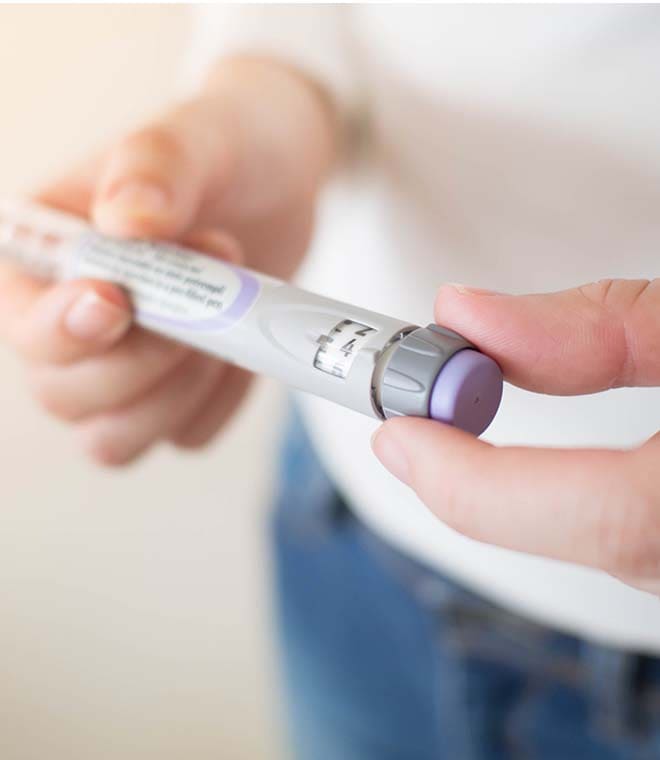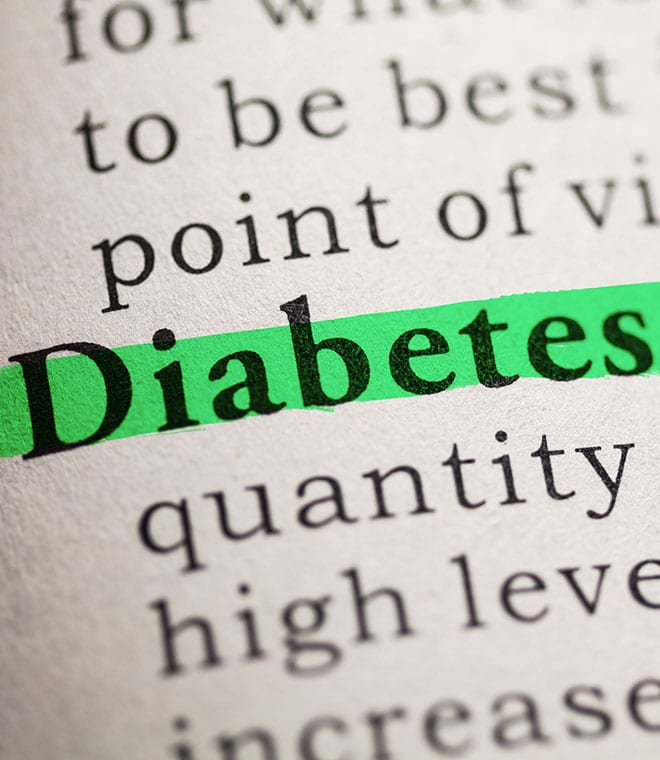Health
Keep blood sugar under control
By Jenilee Matz, MPH Apr 14, 2025 • 11 min
For people with type 2 diabetes, keeping blood glucose (sugar) in check is a must. Managing your diabetes well and controlling your blood glucose can lower your risk of complications, including heart disease, kidney problems, blindness and more.
Foundations of blood glucose control
The goal of managing type 2 diabetes is to keep your blood sugar levels within a healthy range. To achieve this, you should make lifestyle changes, including losing weight if you’re overweight, following a healthy diet and getting regular exercise. If you smoke, you should get help to quit smoking. It can make insulin and blood glucose management more difficult and contribute to developing complications from diabetes.
To help manage type 2 diabetes, you may also need to take medications, such as pills, insulin or other injectable medications. Your healthcare provider can create a plan tailored to you. This can help you reach your goals.
Nutrition and weight
What, when and how much you eat affects your blood sugar. However, a diabetes diet looks no different than a nutritious diet. You should eat a variety of wholesome foods, including vegetables, fruits, whole grains, lean sources of protein, and low-fat and nonfat dairy products. In general, no foods are off limits. However, you should curb your intake of foods high in saturated and trans fats, added sugars and sodium (salt).
Some people with diabetes should count the number of carbohydrates they consume. Carbohydrates turn into glucose in the body, affecting blood sugar levels more than other foods. The number of carbohydrates you need depends on several factors, including how active you are and if you take medication. Work with your healthcare provider to determine your body’s carbohydrate needs. A registered dietitian can teach you how to count carbohydrates and create a nutrition plan that’s appropriate for you. It’s better to choose healthy sources of carbohydrates, including whole grains, beans, fruits and starchy vegetables over unhealthier options, such as pasta, rice, chips, bread, baked goods and sweetened beverages.
Some people with diabetes, especially those who use long-acting insulin and oral medications that lower blood sugar levels, may need to eat at the same time each day or adjust their medications based on their meals. Skipping a meal could lead to dangerously low blood sugar. Other people with diabetes may eat on a more flexible schedule. Discuss meal timing with your healthcare provider.
The number of calories you take in affects your weight. Being overweight increases your risk for diabetes-related health issues. Losing even a few pounds can help reduce health risks and control your blood sugar better. To reach and maintain a healthy weight, you may need to decrease the number of calories you consume by making nutritious food choices and cutting portion sizes. Getting regular exercise can also aid in weight loss. Trying to lose weight takes patience, and it can be frustrating. However, even small changes can make a difference. Replacing soft drinks with water and swapping pastries for oatmeal, for instance, can result in pounds lost.
Exercise
Physical activity helps your body respond to insulin better, which improves blood sugar control. Exercise also burns calories and can help you lose weight. Ask your provider for recommendations regarding exercise. Most people should strive to engage in moderate intensity aerobic (cardio) exercise for at least 30 minutes, five days per week. Note that exercising for 60-minute sessions can yield even better weight loss results. However, keep in mind that any exercise is better than none at all, so do what you can. Make sure you wear comfortable, supportive shoes during workouts. High blood sugar levels can cause poor blood flow and nerve damage to the feet, so you should keep them protected.
Medications
To bring your blood sugar levels near goal, your healthcare provider may prescribe oral medicines, insulin or other injectable medications. It’s important to understand that medications are designed to work with a healthy lifestyle. In other words, if your healthcare provider prescribes medicine for you, you should still eat healthy foods, exercise, and strive to reach and maintain a healthy weight.
There are many different diabetes medications available, and each works in a unique way. If you don’t respond to or cannot tolerate one medicine, your healthcare provider may prescribe another. You may need to take more than one medication to lower your blood sugar. Diabetes medications are often broken down into three types:
Oral diabetes medications: Metformin is often the first medicine given to people with diabetes. There are many different types of oral diabetes medicines, and they may work in one or more ways including: helping your pancreas release insulin when needed, increasing your body’s sensitivity to insulin and limiting the liver’s ability to release sugar.
Insulin: Insulin is a hormone made by the pancreas that helps glucose move from the blood to the body’s tissues where it belongs. In type 2 diabetes, the body doesn’t make enough insulin or doesn’t use insulin properly. Some people with type 2 diabetes may need to use insulin along with oral diabetes medications. Insulin is usually injected into an area of subcutaneous (fatty) tissue using a syringe, insulin pen or with an insulin pump that’s connected to your body.
Non-insulin injectable medicines: Your healthcare provider may prescribe other types of injectable diabetes medicines alone or in addition to other diabetes medications. Some of these injectable medications may also help with weight loss.
Monitoring your blood sugar
Your healthcare provider may ask you to test your blood sugar regularly using a blood glucose meter or glucometer. This involves pricking your fingertip with a lancet, placing a drop of blood on a testing strip and inserting the strip into the glucose meter. The device will calculate your current blood sugar level. Testing shows how your blood sugar is responding to your treatment plan. Your healthcare provider will tell you how often to test. They’ll also give you target blood sugar numbers. In general, the target numbers for people with diabetes are as follows:
Before a meal: 80–130 mg/dL
About two hours after starting a meal: less than 180 mg/dL
Some people may use a continuous glucose monitor (CGM), which measures blood sugar every few minutes with a sensor implanted underneath the skin. Make sure you track all of your blood sugar readings using a diabetes app or a notebook. Bring the log with you to all checkups. Your healthcare provider may want to review your numbers to help make decisions about your care.
Reducing your risk of complications
While blood sugar readings show how your treatment plan is working on a day-to-day basis, they don’t reveal the whole picture. A hemoglobin A1C (glycated hemoglobin) test measures what your average blood sugar level has been over the past two to three months. For many people with diabetes, an A1C of 7% or below is ideal. Note that your healthcare provider may have a different goal for your A1C and daily blood glucose readings depending on your age, health conditions and medications you’re taking along with other factors.
Uncontrolled diabetes can harm many of the body’s organs, such as the heart, nerves, kidneys, eyes and teeth. Your healthcare provider may recommend that you have other tests to check how well these organ systems are functioning. You’ll have your blood pressure measured during every checkup, and you’ll likely have your cholesterol tested once per year. If you have diabetes and high blood pressure, you should also be monitoring your blood pressure at home. A general treatment goal for people with diabetes and high blood pressure is below 130/80 mm Hg if safely attainable, as recommended by the American Diabetes Association (ADA). Your blood pressure goal may be adjusted by your healthcare provider while considering additional factors and health conditions, including pregnancy. For cholesterol, your healthcare provider will decide your targets based on your age, heart disease risk factors and if you take a statin medicine. Keeping these levels and A1C under control can help decrease your chance of cardiovascular-related issues, including a heart attack and stroke.
Quitting smoking can also help reduce your chance of complications. Both smoking and diabetes can cause blood vessels to narrow, which makes your heart work harder. When you quit smoking, your blood circulation, blood pressure and cholesterol may improve. You’ll also lower your risk of nerve, kidney, heart and eye problems.
Make sure you see your healthcare provider, dietitian and any other members of your diabetes healthcare team as often as directed. They’ll tell you what actions to take to bring your blood sugar levels near goal. Following a diabetes treatment plan can feel overwhelming, but it’s worth the effort for your overall health. Keeping diabetes managed reduces the risk of health complications and can improve your quality of life. Let your healthcare provider know if you’re having trouble keeping your blood sugar levels within a healthy range. Together, you can work to get your blood sugar under control.
Updated by Julie McDaniel, MSN, RN, CRNI, April 2025.
- https://diabetesjournals.org/care/article/48/Supplement_1/S181/157569/9-Pharmacologic-Approaches-to-Glycemic-Treatment
- https://www.niddk.nih.gov/health-information/diabetes/overview/insulin-medicines-treatments
- https://www.cdc.gov/diabetes/treatment/
- https://www.uptodate.com/contents/diabetes-mellitus-type-2-treatment-beyond-the-basics
- http://www.mayoclinic.org/diseases-conditions/type-2-diabetes/in-depth/diabetes-treatment/art-20051004?pg=2
- https://medlineplus.gov/diabeticdiet.html
- https://diabetes.org/healthy-living/recipes-nutrition/understanding-carbs
- https://www.uptodate.com/contents/type-2-diabetes-and-diet-beyond-the-basics/print
- https://www.cdc.gov/diabetes/prevention-type-2/stop-diabetes-complications.html
- https://www.uptodate.com/contents/exercise-and-medical-care-for-people-with-type-2-diabetes-beyond-the-basics
- https://www.mayoclinic.org/diseases-conditions/type-2-diabetes/diagnosis-treatment/drc-20351199
- https://www.cdc.gov/diabetes/diabetes-complications/diabetes-and-your-heart.html
- https://www.cdc.gov/diabetes/healthy-eating/diabetes-meal-planning.html
- https://diabetes.org/about-diabetes/complications
- https://www.cdc.gov/tobacco/campaign/tips/diseases/diabetes.html
- https://www.uptodate.com/contents/carb-counting-for-adults-with-diabetes-the-basics
- https://www.niddk.nih.gov/health-information/diabetes/overview/healthy-living-with-diabetes
- https://www.merckmanuals.com/home/hormonal-and-metabolic-disorders/diabetes-mellitus-dm-and-disorders-of-blood-sugar-metabolism/medication-treatment-of-diabetes-mellitus#Insulin-Replacement-Therapy_v25185070
- https://www.uptodate.com/contents/the-abcs-of-diabetes-the-basics?topicRef=1748&source=see_link
- https://diabetesjournals.org/care/article/47/Supplement_1/S179/153957/10-Cardiovascular-Disease-and-Risk-Management



